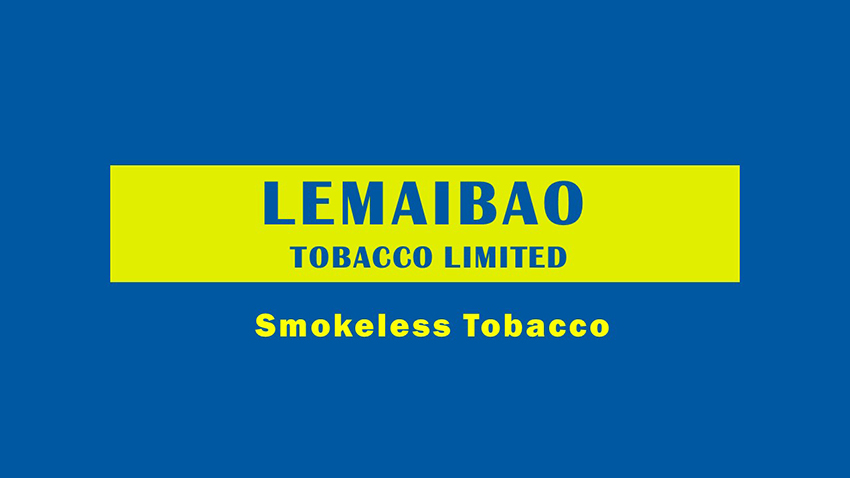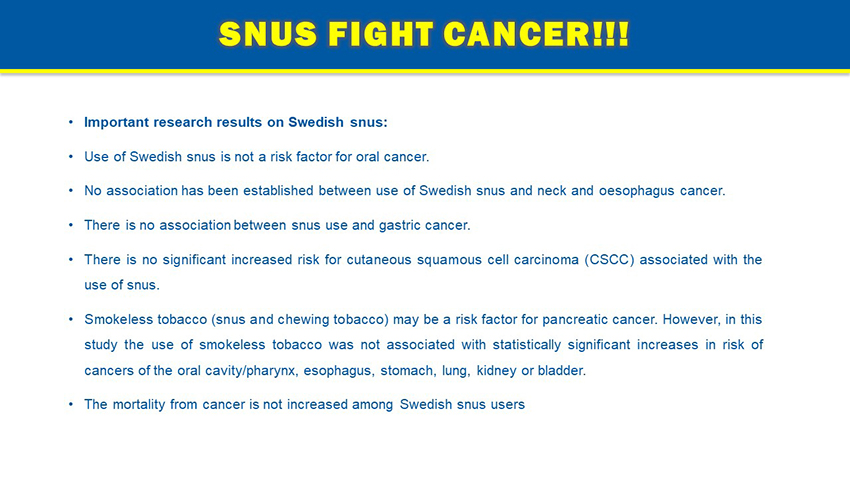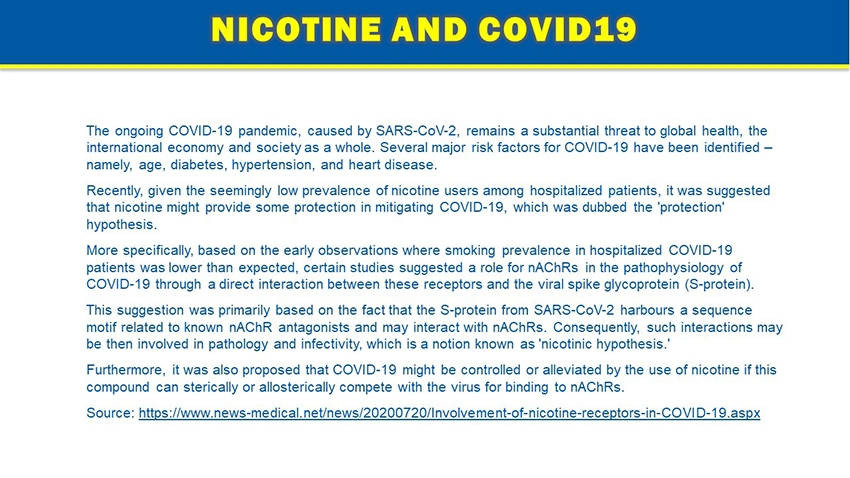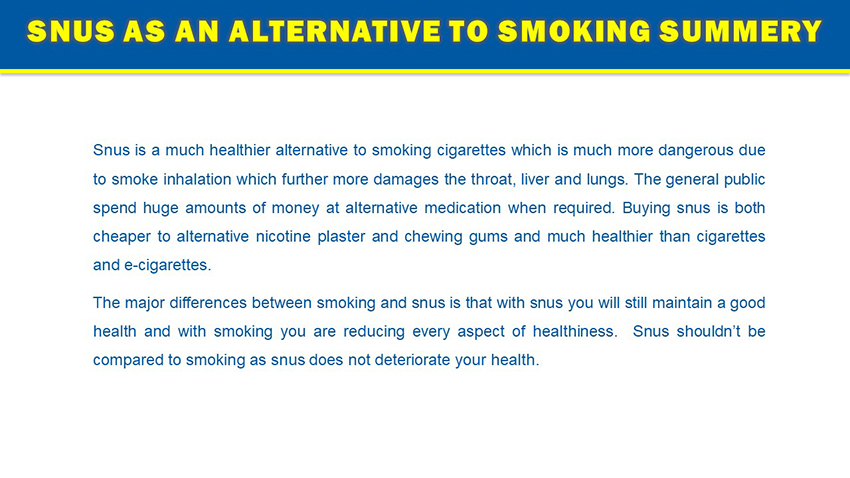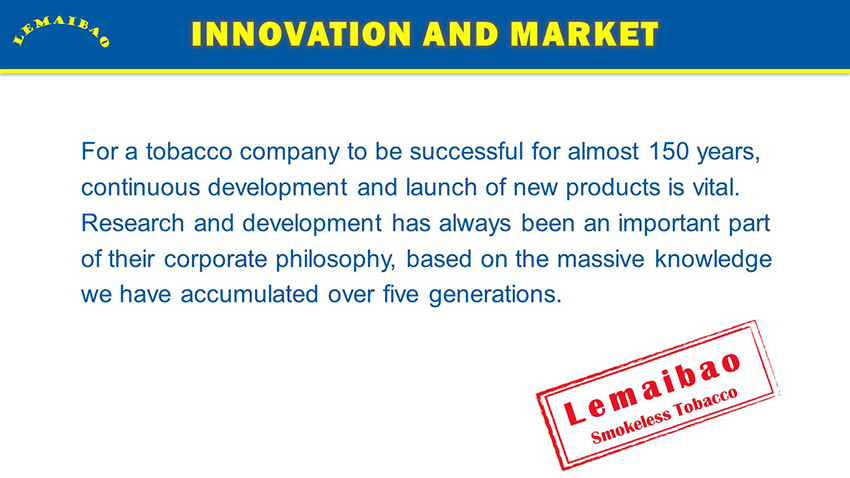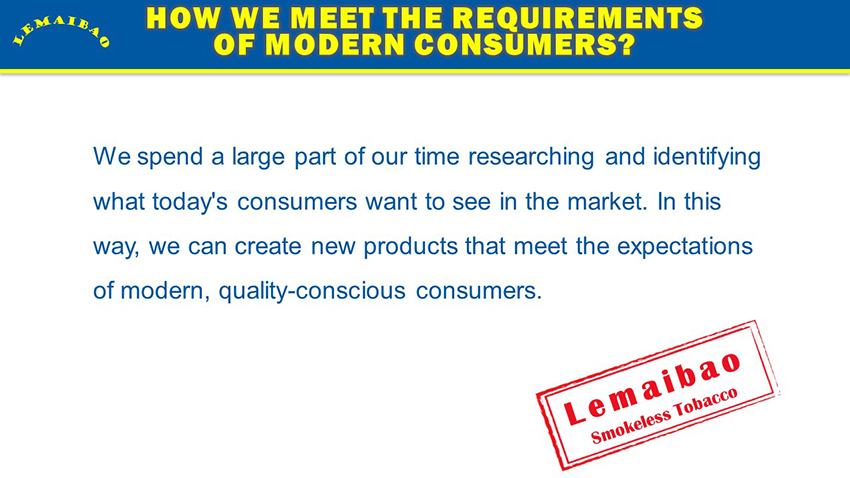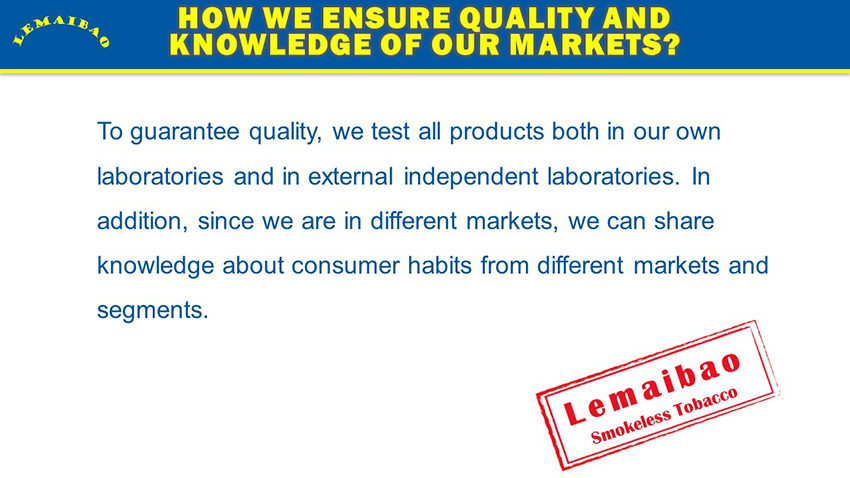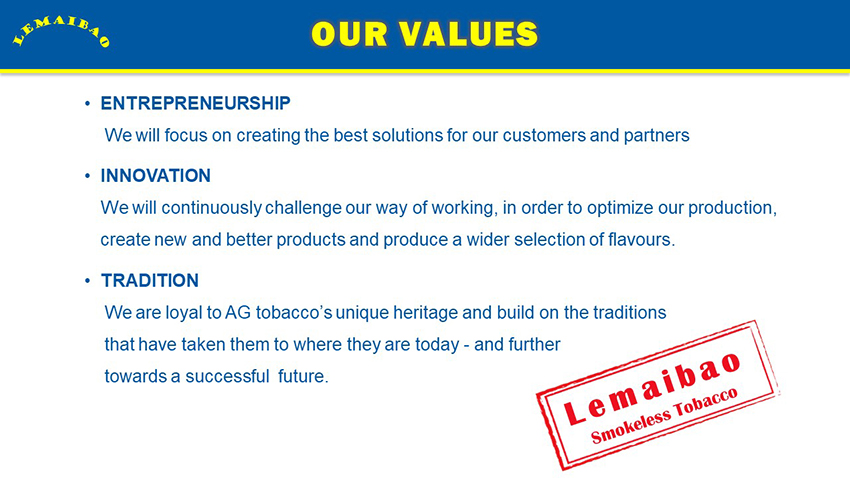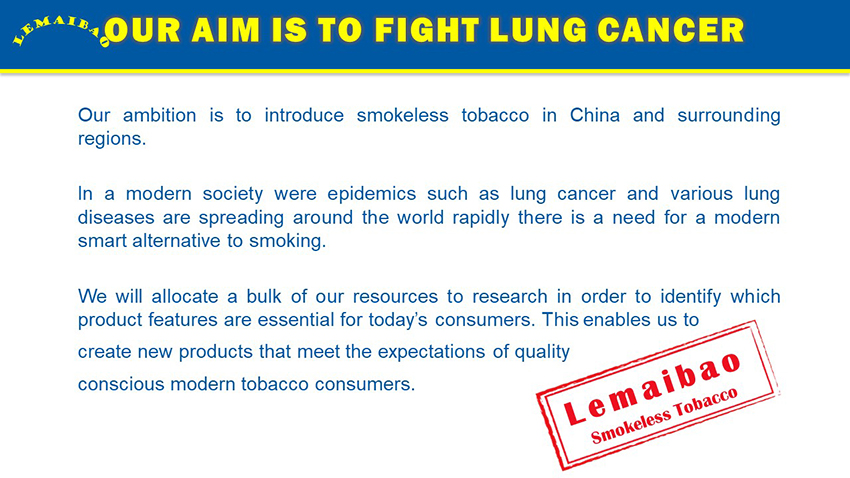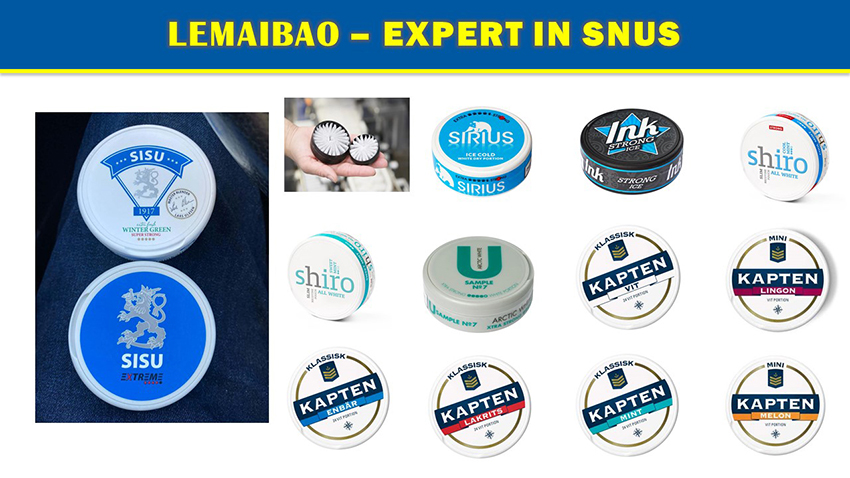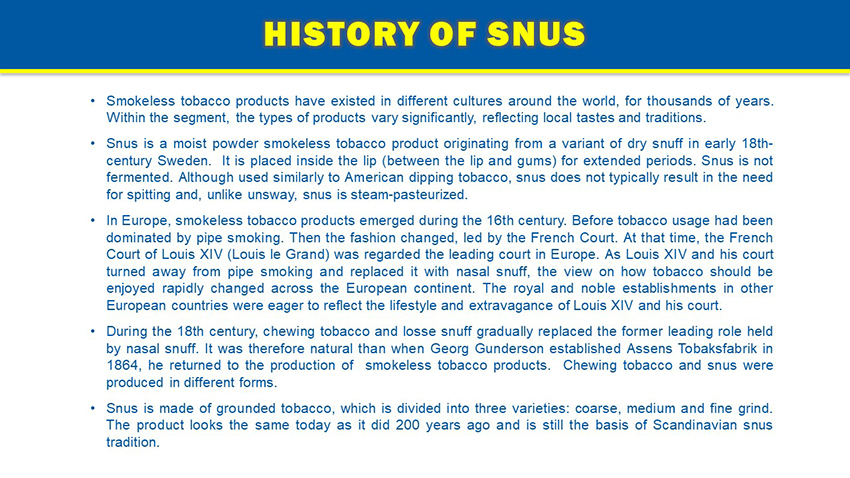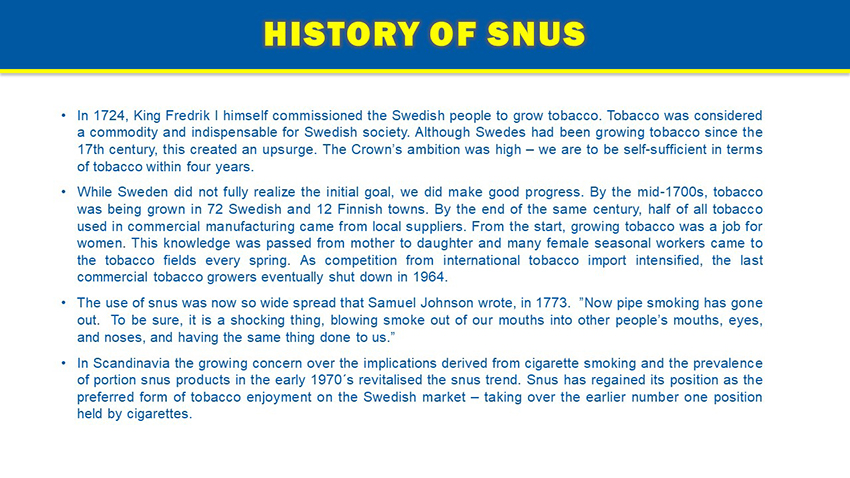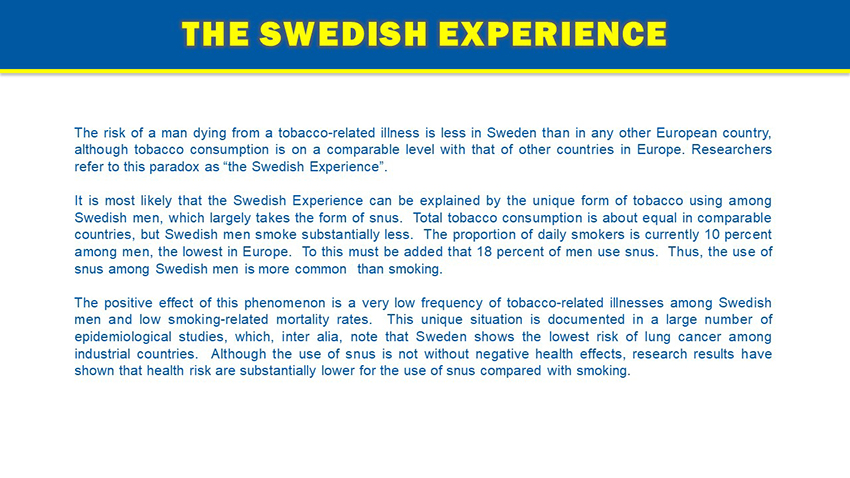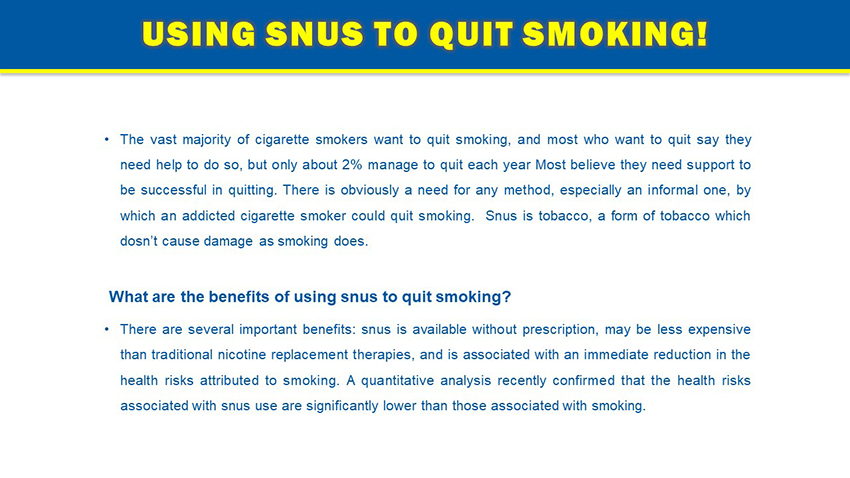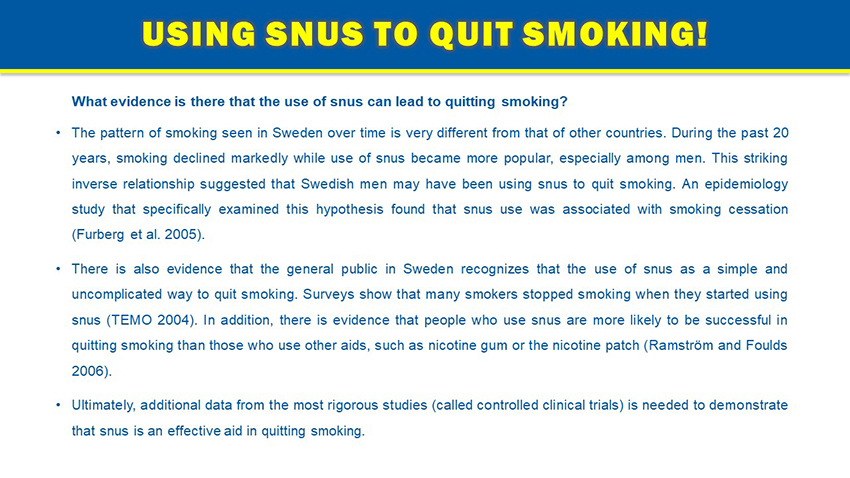Lemaibao Tobacco
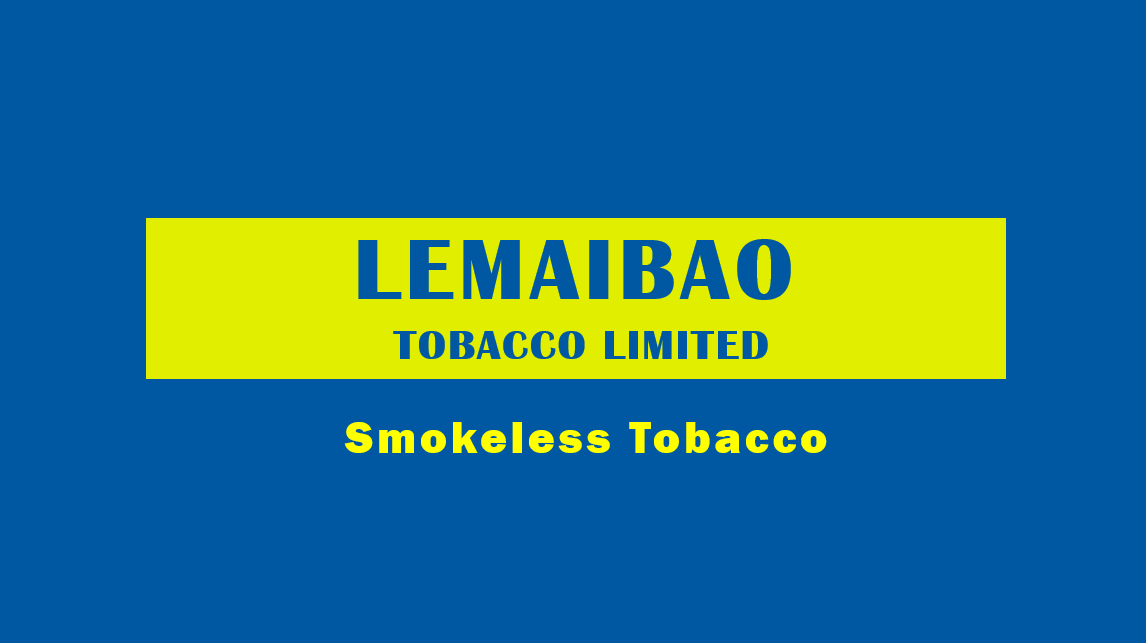
Lemaibao Tobacco Limited
Smokeless Tobacco
Smokeless tobacco products have existed in different cultures around the world, for thousands of years. Within the segment, the types of products vary significantly, reflecting local tastes and traditions.
Snus is a moist powder smokeless tobacco product originating from a variant of dry snuff in early 18th-century Sweden. It is placed inside the lip (between the lip and gums) for extended periods. Snus is not fermented. Although used similarly to American dipping tobacco, snus does not typically result in the need for spitting and, unlike unsway, snus is steam-pasteurized.
In Europe, smokeless tobacco products emerged during the 16th century. Before tobacco usage had been dominated by pipe smoking. Then the fashion changed, led by the French Court. At that time, the French Court of Louis XIV (Louis le Grand) was regarded the leading court in Europe. As Louis XIV and his court turned away from pipe smoking and replaced it with nasal snuff, the view on how tobacco should be enjoyed rapidly changed across the European continent. The royal and noble establishments in other European countries were eager to reflect the lifestyle and extravagance of Louis XIV and his court.
During the 18th century, chewing tobacco and losse snuff gradually replaced the former leading role held by nasal snuff. It was therefore natural than when Georg Gunderson established Assens Tobaksfabrik in 1864, he returned to the production of smokeless tobacco products. Chewing tobacco and snus were produced in different forms.
Snus is made of grounded tobacco, which is divided into three varieties: coarse, medium and fine grind. The product looks the same today as it did 200 years ago and is still the basis of Scandinavian snus tradition.
Project display
![]()







